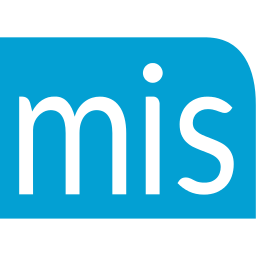 Call in leads can be tricky. Because reps often equate the implied interest of a call in to being “qualified,” they often skip some important steps. This can happen to all sales reps and even happened to me recently…
Call in leads can be tricky. Because reps often equate the implied interest of a call in to being “qualified,” they often skip some important steps. This can happen to all sales reps and even happened to me recently…
A CEO called me the other day and wanted to know more about the kind of training I offered. Before I gave him my menu of services, I did what I teach and asked him how he found me, what motivated him to reach out to me, what he was looking for, etc.
I listened carefully as he revealed, in a candid way, what was happening with his inside sales team and what he as hoping to accomplish.
After he was done, I went over how I could help him and carefully matched up my customized solutions to each of the points he brought up. After a pause, he told me he would think about it and reach back out to me.
Now, this is usually the time that I would qualify and close, but I was on vacation when this call took place and was more interested in getting back to the museum tour I was on than I was on closing the deal (I know, shame on me). But…
When I was back in the office the following Monday, I reached out to this prospect and picked right up where I left off.
Here are two ways of handling a call in lead (the first being what I should have done on the first call, and the second what I did on the next call the following Monday):
The proper way to handle the first call:
After first hearing your prospect out and then matching up your product or services to them, you should then begin qualifying and even closing using the following questions and statements:
“What is your timeline for getting this process started?”
[If “As soon as possible”]
“O.K. – Let me check my schedule: (or your delivery/install schedule, etc.), I see that I could have you on the calendar this coming Wednesday – does that work for you?”
AND
“How does what I’ve described sound to you?”
[If “Sounds good”]
“Great – are you ready to put me to work for you today?”
AND
“Who else have you looked at for this so far?”
[If “You’re the first” or “A couple of people”]
“How does our solution sound to you?”
[If “Sounds good”]
“Great – then let’s look at our calendars and pick a date to get started…”
AND
“If this sounds good to you, are you in a position to get started today?”
[If “I’ll have to run this by (whomever)”]
“I understand. Does what we’ve just gone over sound good to you so far?”
[If “Yes”]
“O.K. Then let’s go ahead and schedule a time to speak with (whomever they mentioned) and that way I’ll be able to answer their questions as well…”
Do you see how I’m moving the call to either a close or setting up the next step? At each phase I’m taking their pulse and directing and keeping control of the call.
If you missed asking these questions on the first call, then here’s how you handle the call back:
“Hi this is ________ and I just wanted to get back with you regarding our last call. Now I know you were interested in (your service or product), and I don’t know if you’ve spoken to other companies or where you are in the process….”
[Now hit mute and listen…]
AND
“Hi this is ________ and I wanted to get back with you regarding our last call. Now I know you were interested in (your service or product), and I wanted to know what your timeline for getting started with this is…”
[Now hit mute and listen…]
And
“Hi this is ________ and I wanted to get back with you regarding our last call. Now I know you were interested in (your service or product), and I wanted to know what other questions you might have are…”
[Now hit mute and listen…]
Based on what their answers are to the above questions, you can pick up where you left off last time and resume asking the questions from the first set listed above (direct and control the call towards the close).
Either way, just remember that when you receive a call in lead, you need to still qualify and close. And if you forget or get rushed off the phone, the key is to call back within a day or two. And when you do, take the call as far as you can using the scripts above.





 One of the biggest mistakes many inside sales reps make is pitching the gatekeeper. For some reason they feel compelled to pour their pitch on the first pair of ears they get, and, unfortunately, this usually gets them into trouble.
One of the biggest mistakes many inside sales reps make is pitching the gatekeeper. For some reason they feel compelled to pour their pitch on the first pair of ears they get, and, unfortunately, this usually gets them into trouble.
